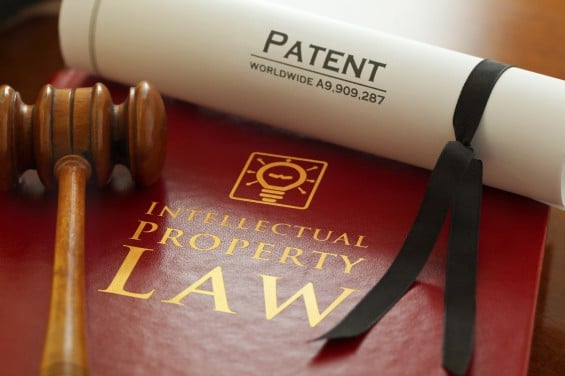 As is often the case when I have the privilege of performing my pro bono volunteer work for the NYC Family Court, one of my recent consultations involved a father embroiled in a custody dispute with his ex-wife. You don’t need to know the details to imagine a father’s pain at the thought of losing the ability to help guide his child through their formative years. Having to fight to maintain that right in an unfamiliar and often unforgiving legal system can increase the emotional challenge for unrepresented litigants. For myself, it is both an honor and a solemn responsibility to try to help fathers like that — and all of the Family Court litigants, irrespective of the issue they are dealing with — in the brief time that I have to consult with them. All I can hope for is that their interaction with me will allow them to move forward better armed to deal with their legal issue, as well as supported by the fact that a stranger is willing to listen to them and to try to help in their moment of need. And as much as I hope that this paragraph inspires someone to do some pro bono, I also think family law and patent law have many parallels — including with respect to the emotional element that drives many of the cases each field deals with.
As is often the case when I have the privilege of performing my pro bono volunteer work for the NYC Family Court, one of my recent consultations involved a father embroiled in a custody dispute with his ex-wife. You don’t need to know the details to imagine a father’s pain at the thought of losing the ability to help guide his child through their formative years. Having to fight to maintain that right in an unfamiliar and often unforgiving legal system can increase the emotional challenge for unrepresented litigants. For myself, it is both an honor and a solemn responsibility to try to help fathers like that — and all of the Family Court litigants, irrespective of the issue they are dealing with — in the brief time that I have to consult with them. All I can hope for is that their interaction with me will allow them to move forward better armed to deal with their legal issue, as well as supported by the fact that a stranger is willing to listen to them and to try to help in their moment of need. And as much as I hope that this paragraph inspires someone to do some pro bono, I also think family law and patent law have many parallels — including with respect to the emotional element that drives many of the cases each field deals with.
In fact, there are many linguistic similarities between the two disciplines. In patent parlance, we talk of “conceiving” of an invention, or “giving birth” to a new idea. Inventors and creators often refer to their “creations” or “children” that they have “nurtured.” They demand recognition for their investment and singular focus in terms of developing their inventions, in ways that mirror how parents demand the same with respect to the sacrifices they make for their children. It is no surprise, therefore, that many inventors develop strong emotional attachments to their “offspring,” as well as strong reactions when their IP comes under attack. Nothing I am saying is a surprise to any IP lawyer — and I dare to suggest that the emotional component of our area of law is one of the things that has attracted many of us to this practice. Yes, it can be annoying when an inventor for the umpteenth time refers to the massive value of their patent portfolio without much to suggest that such valuations are accurate or even reasonable. Still, we like working with creative people and find it rewarding when they see some recognition for their contributions to the world.
At the same time that inventors often have strong ideas about their ownership of their ideas, that can sometimes come into tension with the views of their employers. Over the years, some of the most difficult situations that I have had to deal with on the IP side shared significant parallels with family law custody disputes. The typical fact pattern would usually involve an employee that developed an idea somewhat, but not completely, related to the line of business they were involved in. In the more difficult cases, there was no written agreement requiring the employee to assign their inventions to the company — but the employer insisted that they had to do so anyway. More than once, the employer had no basis for making that claim, but the employee was so scared of negative impacts to their standing in the company that they went ahead with the assignment anyway. A tough situation, very much akin to a family court custody dispute.
While counseling those involved in such situations can be a challenge, it is also known that the more common situation for IP lawyers to deal with is when the employee has signed away rights to any inventions they discover as part of their employment agreement. Every so often, however, serious questions can arise as to whether such an agreement controls a given invention. A recent precedential federal circuit opinion discusses an interesting example of a dispute in this area. (As always, there is a great discussion of the opinion on Patently-O, including an interesting prediction that increased use of AI in the business world will lead to further ownership/inventorship disputes.)
In the case before the federal circuit, the district court had concluded as a matter of law on summary judgment that the plaintiff did not own the patent at issue, since it had previously been assigned under the terms of an employment agreement. Due to the lack of standing, the district court entered final judgment against the plaintiff. There was no dispute that at the time the invention was conceived, the inventor/employee was a doctoral student on a company-sponsored fellowship arrangement. After his employment with the company concluded years later, the inventor assigned the patent to the company he himself owned that brought the case as a plaintiff.
On appeal, the panel focused on whether the carve-out for inventions conceived were “developed entirely on the employee’s own time.” The district court found that because the inventive activity occurred while the inventor was an employee-sponsored fellow, the invention at issue was not developed only on the inventor’s time. The panel disagreed, remanding the case for further fact finding that could bear on the interpretation of the agreement. For example, the panel identified the employer’s lack of assertion of rights over the disputed patent until the lawsuit was in progress as an area of further inquiry. Likewise, more fact finding was appropriate surrounding a purported admission by a superior of the inventor that the invention belonged to the inventor, not the company. Importantly, the majority also found that the questions on remand necessitate fact finding by the court, not a jury, since the interpretation of the agreement bore on a question of standing.
For its part, Judge Mayer’s dissent was untroubled by any ambiguity in the agreement, because in his view, the overwhelming weight of the undisputed facts supported the district court’s conclusion that the invention at issue was not made “entirely on the inventor’s own time.” For the dissent, the inventor’s admission that “his Ph.D. dissertation was ‘essentially identical’ to the provisional patent application” that led to the disputed patent — coupled with the fact that the invention was in an area of interest for the same employer that was paying him while he pursued his Ph.D. was enough to support summary judgment that the employer owned the patent at issue. We will see how this dispute gets resolved on remand. In the meantime, it’s important to remember that when it comes to IP ownership, who owns your time can be a meaningful question. And that what we think is ours, very well may be claimed by another.
Please feel free to send comments or questions to me at gkroub@kskiplaw.com or via Twitter: @gkroub. Any topic suggestions or thoughts are most welcome.
Gaston Kroub lives in Brooklyn and is a founding partner of Kroub, Silbersher & Kolmykov PLLC, an intellectual property litigation boutique, and Markman Advisors LLC, a leading consultancy on patent issues for the investment community. Gaston’s practice focuses on intellectual property litigation and related counseling, with a strong focus on patent matters. You can reach him at gkroub@kskiplaw.com or follow him on Twitter: @gkroub.
#Owns #Time #Law










